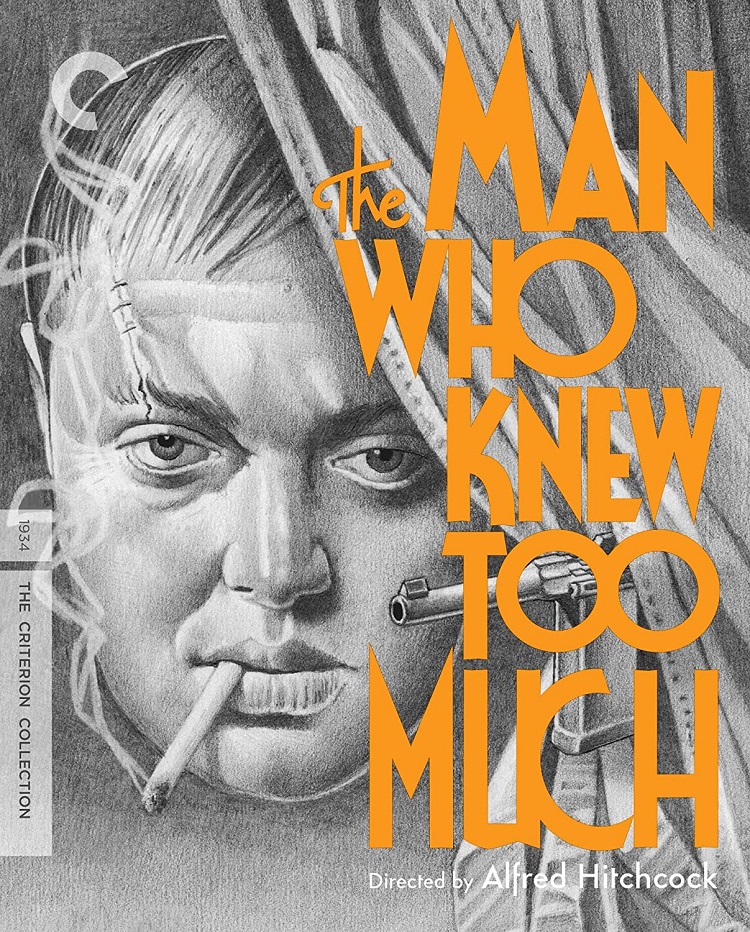
In 1934, Alfred Hitchcock was not considered the great director we know him as today. Nor was he the Master of Suspense. He wasn’t even particularly well known outside of Britain and was hardly a household name there. He’d had a couple of successes as a director but was having trouble finding a home studio and kept being forced to make pictures like Waltzes from Vienna that were completely uninteresting to both the director and audiences alike.
While making that film, producer Michael Balcon (who had originally discovered Hitchcock and allowed him to make his first completed film as director, The Pleasure Garden) asked Hitchcock what he was doing next, which led them to a discussion of the film that would eventually become The Man Who Knew Too Much. Hitchcock was none too pleased with his studio at that time, British International Pictures, and so Balcon took him on once again.
The Man Who Knew Too Much was a big success both commercially and critically and put Hitchcock on the path to greatness. It is often considered to be the first truly Hitchcockian film of the director’s as it includes a number of ideas and themes that he would so often return to and that make up what we think of as the director’s signature style. It features ordinary people up against extraordinary events, sinister murders, ever tightening suspense, and even a bit or wry sexual humor that slipped past the censor.
The plot focuses on a British married couple, Bob and Jill Lawrence (Leslie Banks and Edna Best) vacationing in Switzerland. They witness the murder of a Frenchman who uses his dying words to lead them to a secret message about an assassination plot of a foreign diplomat. The would-be assassins then kidnap the couple’s daughter in order to keep them from bringing that message to the British Consulate.
Bob Lawrence and his friend Clive (Hugh Blakefield) use the secret message to try and find the assassins and the girl. This takes them through a series of mad adventures including dealings with a psychopathic dentist; a sun-worshipping cult, which also doubles as the assassins’ hideout; and the Royal Albert Hall, where the assassination is attempted.
The assassins’ leader is played by Peter Lorre in his first English language picture. Apparently the actor barely spoke the language and had to learn his lines phonetically. Though one could hardly tell this as his performance is masterful and his English carries the same slightly off-kilter accent he would become known for.
At 75 minutes the film flies from one scene to the next allowing little time for anything more than plot points and action sequences. It is all very exciting and makes for a perfectly marvelous bit of thrilling suspense but doesn’t do much in terms of character development or fleshing out of the plot. Not that this really matters as one is so swept along with the action that you will hardly notice.
Criterion has done a magnificent job of restoring and cleaning up the print. The contrast in the black and white photography is brilliant; the picture looks crisp and clean and overall everything looks quite lovely. There are moments when the edges of the picture get a bit wobbly and blurry, but its hardly noticeable unless you are looking. During the feature on the restoration process ,they note that the oldest and best print they could find was severely warped so considering what they had to work with this print is nothing short of a miracle.
For kicks and giggles I got out my old copy of the film that I bought years ago in a cheapo set of early Hitchcock works that one finds in dusty old bins and that print was hardly watchable. So full it was of scratches and dust and so faded was the film.
Also included is an audio commentary by film historian Phillip Kemp. It is a deeply researched an informative commentary (so much so that my wife noted that he was surely reading from extensive note cards as no one could have that much information available to them from memory.) His delivery however is a bit academic and I found my mind periodically wandering off.
Additional features include an interview with Guillermo Del Toro, who wrote a book on Hitchcock before he began his own directing career. The Illustrated Hitchcock features two long interviews with the director for a television program in 1972. It also comes with a booklet and an essay from critic Farran Smith Nehme. Lastly, there is an audio excerpt from an interview between Hitchcock and noted French director François Truffaut. This is an all-too-short look into what must have been an amazing conversation between the two legends. I’ve never heard that the full audio has been made publicly available, but Truffaut did turn the interview into Hitchcock a much-praised book.
The Man Who Knew Too much is perhaps most famous for being the only film remade by Hitchcock. The remake made in 1956 starred James Stewart and Doris Day and is generally considered the better film. I’d agree with that though I’d also say the remake is entirely unneeded. The 1934 version stands perfectly well on its own. With this Criterion version film fans of all ages can not only see a great film but get a good look at the renowned director finding his feet and beginning to form the skills and style that would make him one of the greatest directors the world has ever known.